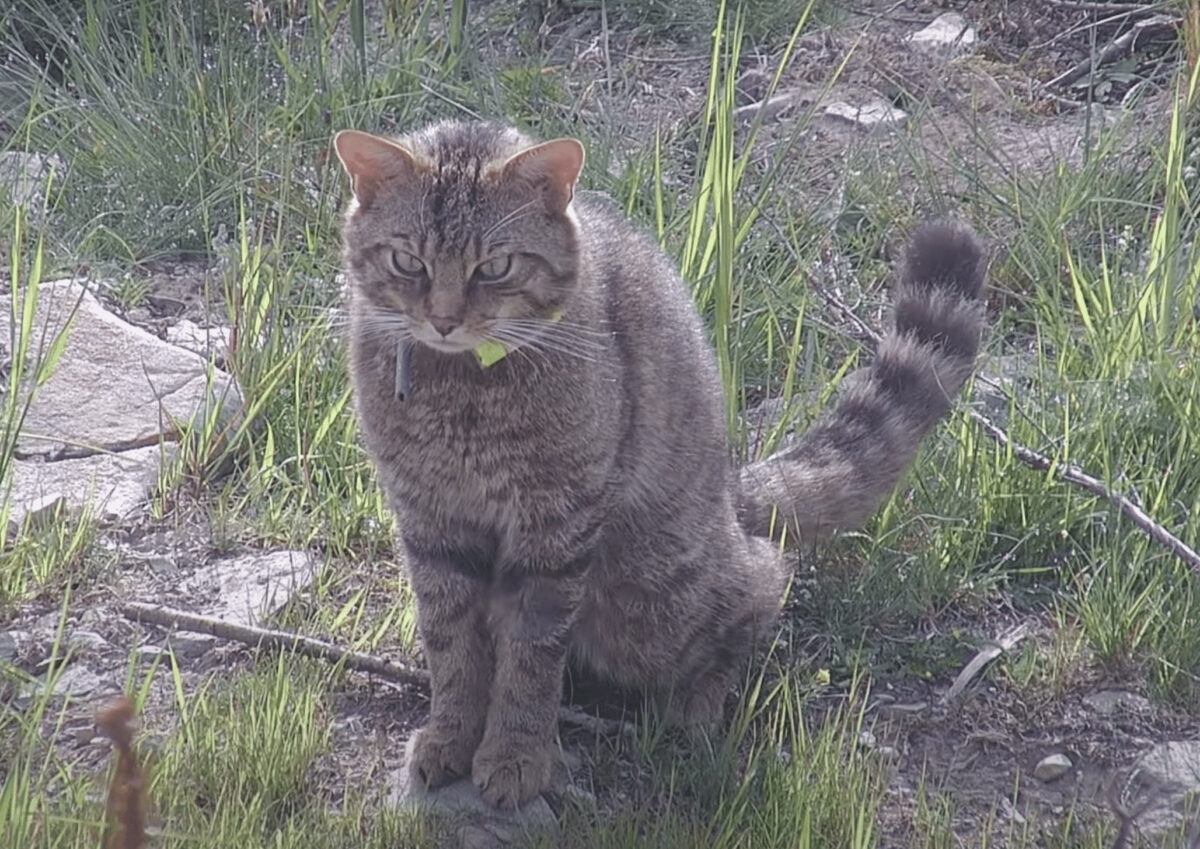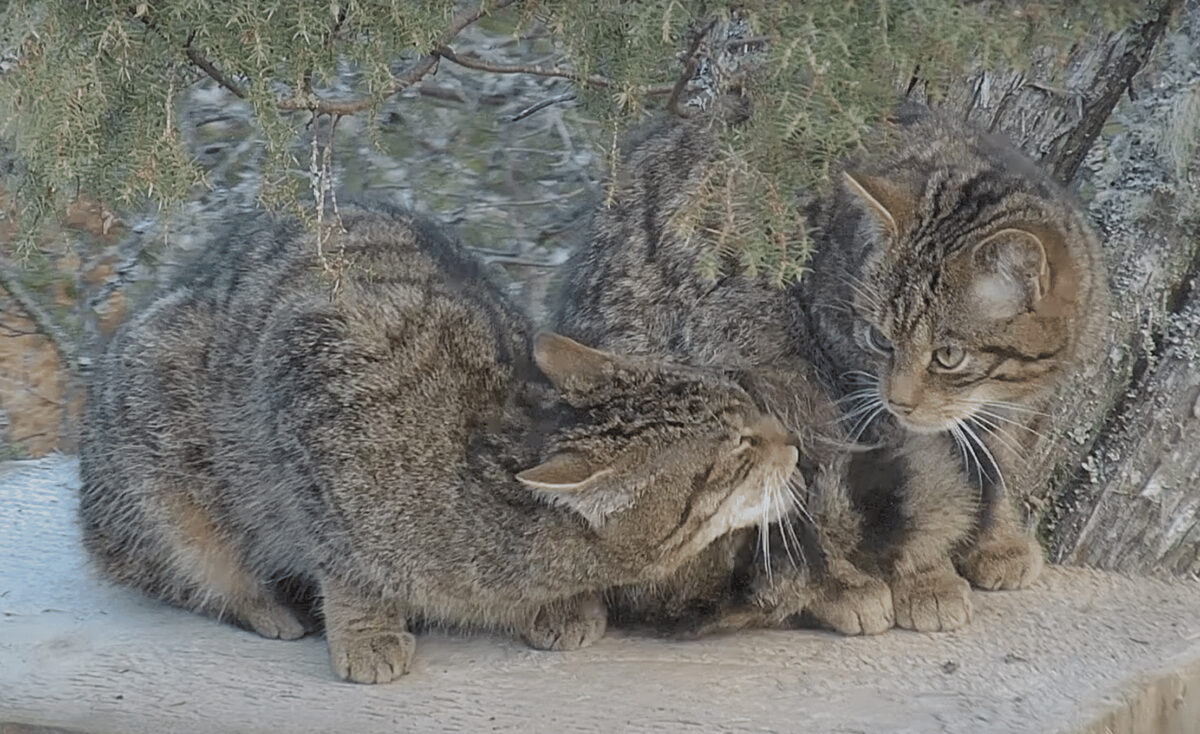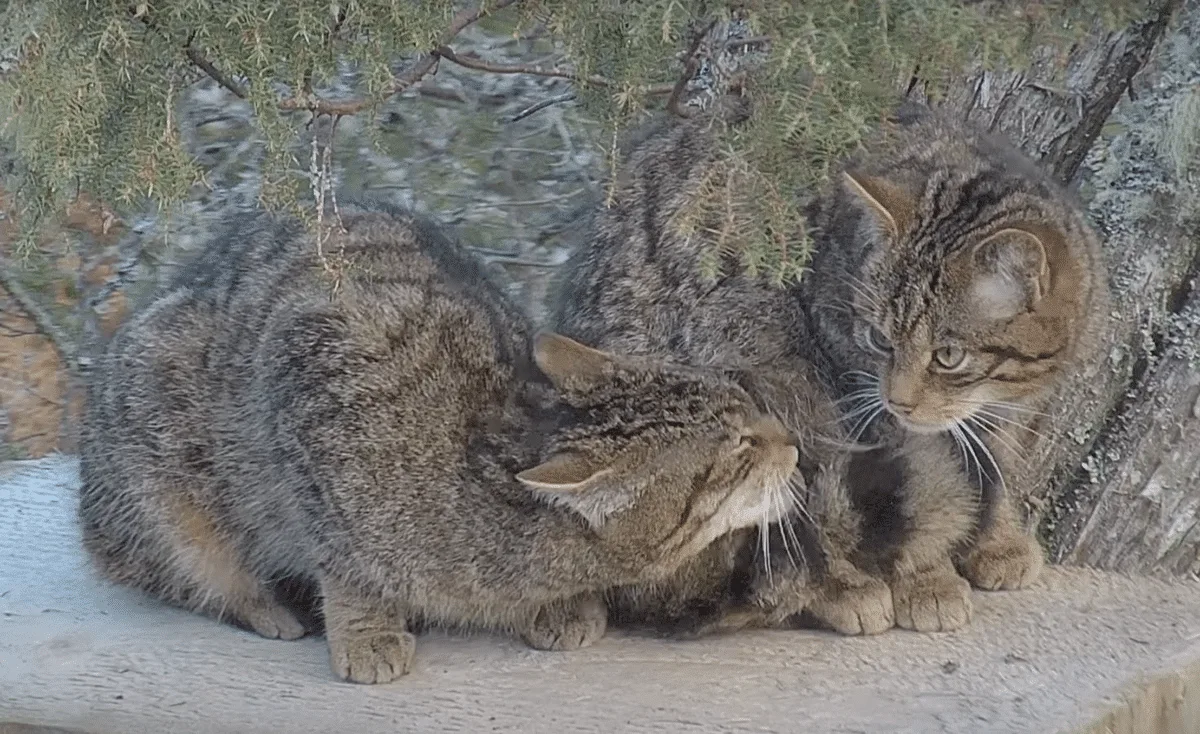In a groundbreaking and historic move to prevent the extinction of the wildcat in the UK, a wildcat reintroduction project in Scotland is underway.

The project involves releasing nearly 20 young wildcats into the wild, marking the first time a predatory mammal has been deliberately reintroduced in the UK. The initiative seeks to rescue the species from the brink of extinction due to a loss of genetic integrity, population decline, and other environmental challenges.
The Urgency of Wildcat Reintroduction
Once on the brink of functional extinction, the Scottish wildcat faced a dire predicament. In 2019, a report from the International Union for Conservation of Nature (IUCN) painted a bleak picture of their future. With just around 30 remaining individuals, these elusive cats were precariously close to being functionally extinct. This occured as a result of significant losses of native woodland, human persecution and interbreeding with domestic cats.
Scotland’s Effort to Reintroduce Wildcats
In response to the devastation of this top predator, The Royal Zoological Society of Scotland (RZSS), in collaboration with various partners, has launched a comprehensive program of reintroducing wildcats in Scotland, within their native habitat. These cats are carefully bred and nurtured at an RZSS wildlife park, with a vision to release around 60 wildcats in the Cairngorm mountains, south of Inverness.
A Well-Planned Release
The reintegration of nearly 20 young wildcats was no arbitrary decision; it was a meticulously planned operation with the singular aim of enhancing their chances of survival. These wildcats have been reintroduced into a secluded pine forest within the Cairngorms. Each of them is equipped with a GPS tag, constantly monitored by the Saving Wildcats program. To ease their transition to a life of hunting rabbits, voles, and mice in the wild, supplementary food is provided.

Long-Term Strategy for Success
The reintroduction of wildcats in Scotland is not a transient endeavor; it is a profound commitment to securing the future of these remarkable felines. The road to success will be evaluated over several years, with two additional releases scheduled for 2024 and 2025 in diverse locations within the Cairngorms. To ensure the continued prosperity of the wildcats, it is crucial that efforts are coordinated to manage domestic cats. These measures may include mandatory neutering and microchipping of local domestic cats and expanding native woodlands for their habitat – initiatives that require the collaborative support of both the local community and landowners.
Wildcat Reintroduction’s Ripple Effect
The wildcat reintroduction project is a significant component of a larger wave of successful rewilding and conservation endeavors in Scotland. This wave encompasses the revival of various species, including beavers, sea eagles, golden eagles, and red squirrels. Notably, beavers have made a stunning return, with estimates suggesting that as many as 10,000 could inhabit the wild by 2030.
A Political Landscape for Conservation
One of the key catalysts for the success of these projects lies in the unwavering political will and support for conservation in Scotland. The country’s devolved government, led by a coalition between the Scottish National Party and Scottish Greens, has carved out a unique space for conservation. Ambitious biodiversity strategies, progressive land reforms, and stringent measures to combat environmental abuses set Scotland apart as a leader in conservation efforts, distinguishing it from the rest of the UK.
Watch Video: Wildcat Reintroduction in Scotland
A Multitude of Species on the Path to Recovery
Wildcats aren’t the only beneficiaries of Scotland’s restoration efforts. A slew of other species are making stunning comebacks, further highlighting the remarkable potential of dedicated conservation and the enduring promise of global wildlife restoration. These species include beavers, capercaillie, red squirrels, golden eagles, and pine martens, all finding their place in Scotland’s diverse and thriving ecosystems.
Conclusion
In summary, the wildcat reintroduction in Scotland serves as a potential beacon of hope, an effort to bring these beautiful animals back from the precipice of extinction. It underscores the profound impact of commitment and support in safeguarding wild animals and biodiversity to reinvigorate our natural world. While the path of conservation may be fraught with challenges and uncertainties, it is a journey that promises to preserve our planet’s irreplaceable wildlife for generations to come.
What do you think about wildcat reintroduction in Scotland? Leave a comment below.
Thank you for following along with this article – Wildcat Reintroduction in Scotland: A Remarkable Rescue Mission.
You may also like:
- Amur Leopard: World’s Most Endangered Big Cat
- Different kinds of Wild Cats
- Top 10 Endangered Animals in Scotland
- India’s Snow Leopard Survey Reveals 718 Individuals - February 25, 2024
- 10 Interesting Facts About Seahorses - February 24, 2024
- Sea Turtle Nests Discovered in Cambodia - February 24, 2024


